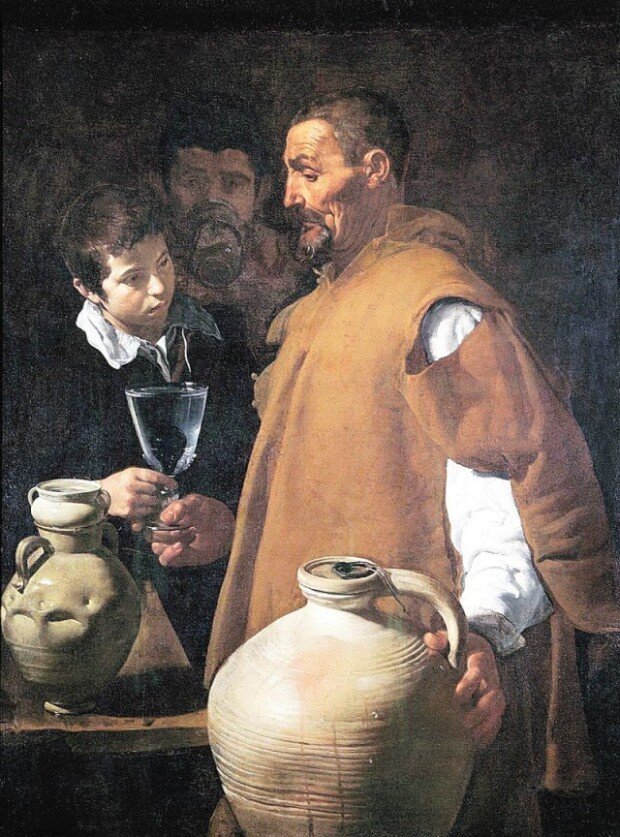An old man with dignity
An old man with dignity
Posted July. 21, 2022 07:51,
Updated July. 21, 2022 07:51

Water is important in living things. Cities flourished where water flows, and clean water is a prerequisite for sustaining lives. Water has been a commodity for many years. Water trading was already a daily ritual in 17th-century Spain. Spanish artist Diego Velazquez painted a picture of people in Seville selling and buying water.
Velazquez is an exponent of the Spanish Baroque painting. As a leading artist in the court of King Philip IV of Spain, Velazquez drew many masterpieces. “The Waterseller of Seville” is a painting of the early period of his career, before he left Seville, his hometown, to Madrid, presumably in his late teens or early 20s. The painting not only shows Velazquez’s delicate and vivid style of painting, but it also demonstrates the painter’s excellence in depicting a person’s state of mind.
In the painting, an old man in the right side is handing a young boy on the left a glass of water. In the glass of water is a fig, a perfumer intended to make the water taste fresher. It seems that water has been freshly poured, as indicated by the gigantic jar the old man holds glistening with splashes of water. There is a strong contrast between the two people. The old man has dark, sun-burned skin and is wearing old and torn clothes, while the young boy is white skinned and is dressed in clean and nice clothes. It is obvious that they belong to different social class. What makes this painting interesting is their eyes, that they do not make eye contact. The waterseller is simply selling water, and he does not display any emotion at all. Young Velazquez must have been captivated by this theme; he drew three almost identical paintings.
The audience cannot know why the old man and the young boy do not make eye contact. Yet it is clear that the old waterseller from a low social class and the young boy from upper class are connected through the agency of water. The painter gave the old man the appearance of a saint or philosopher exuding a sense of solemnity. Maybe the old man was an ideal version of the future self, dreamt by the young painter. A dream of growing old with dignity, despite being in poverty.



![화장실 갇혔을 때 생존법…“최후에는 변기뚜껑” [알쓸톡]](https://dimg.donga.com/c/138/175/90/1/wps/NEWS/IMAGE/2025/12/26/133042007.3.png)


![보일러 풀가동해도 춥다?…난방비 폭탄 범인은 ‘이것’ [알쓸톡]](https://dimg.donga.com/c/138/175/90/1/wps/NEWS/IMAGE/2025/12/24/133029046.3.png)
